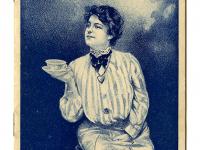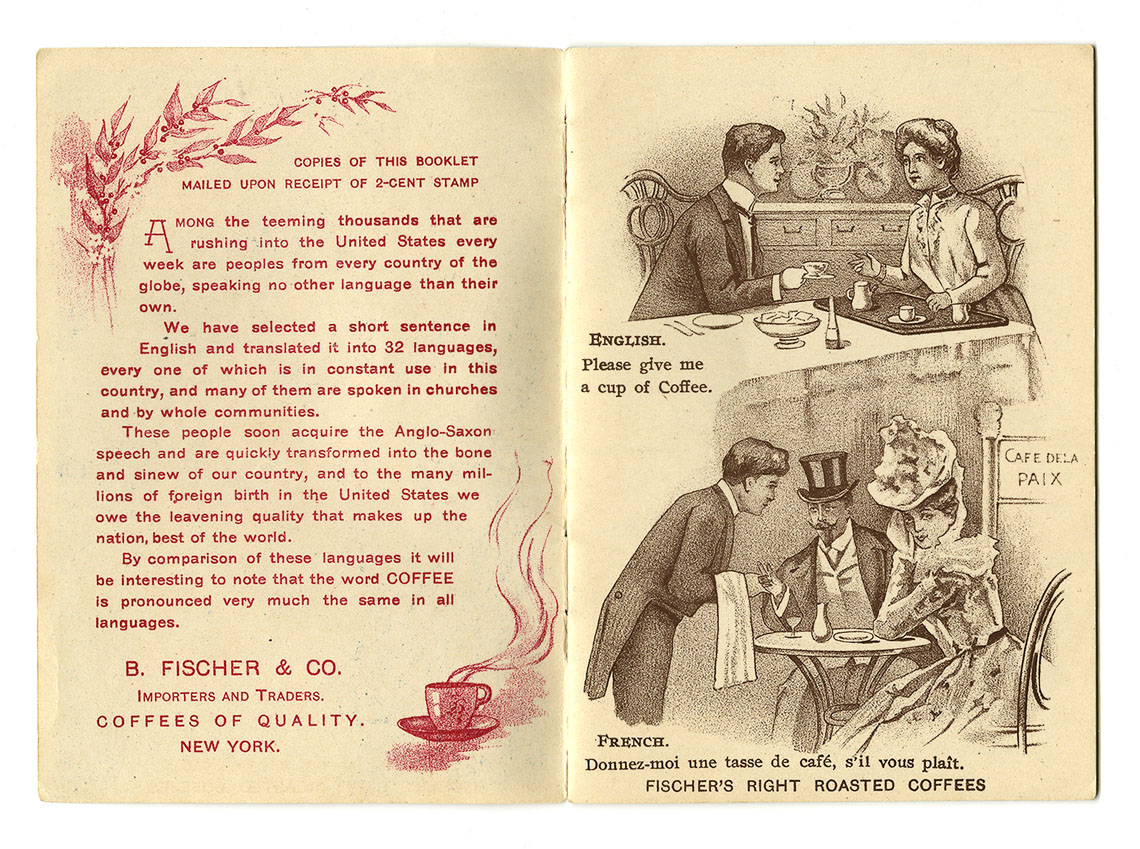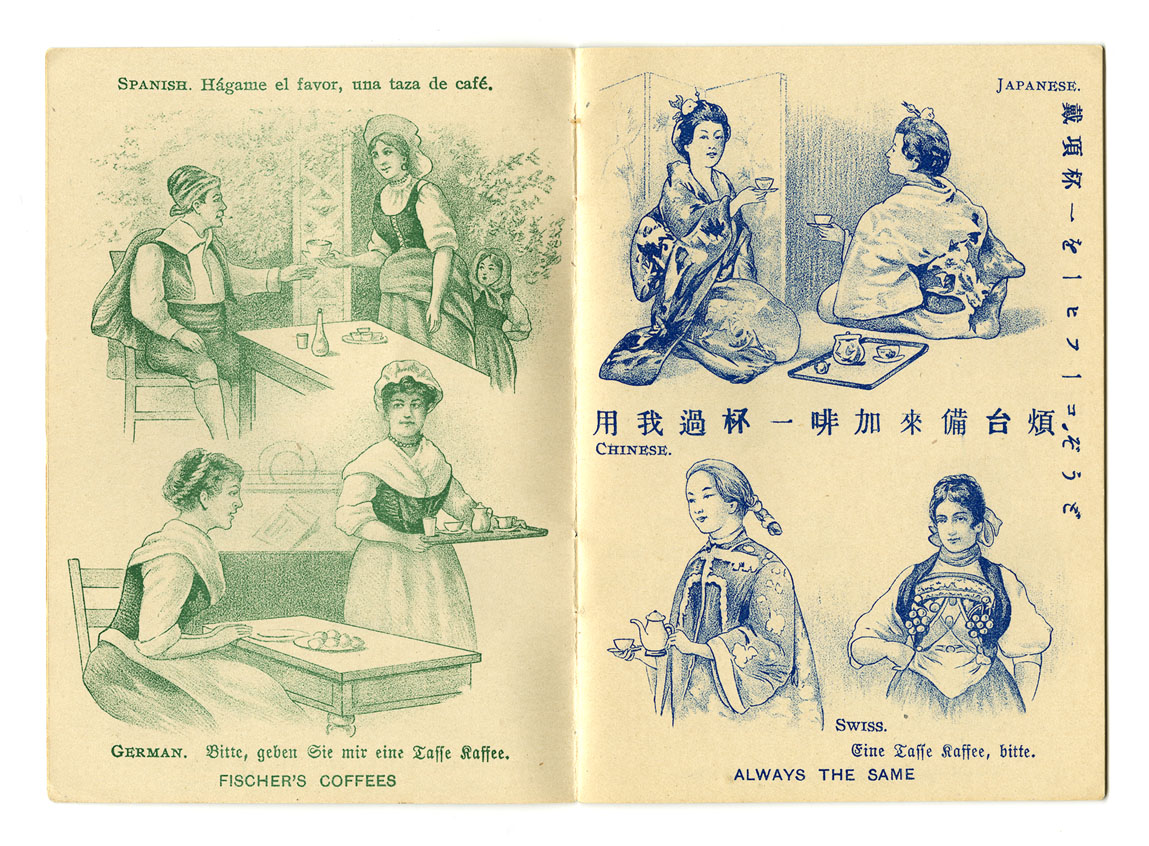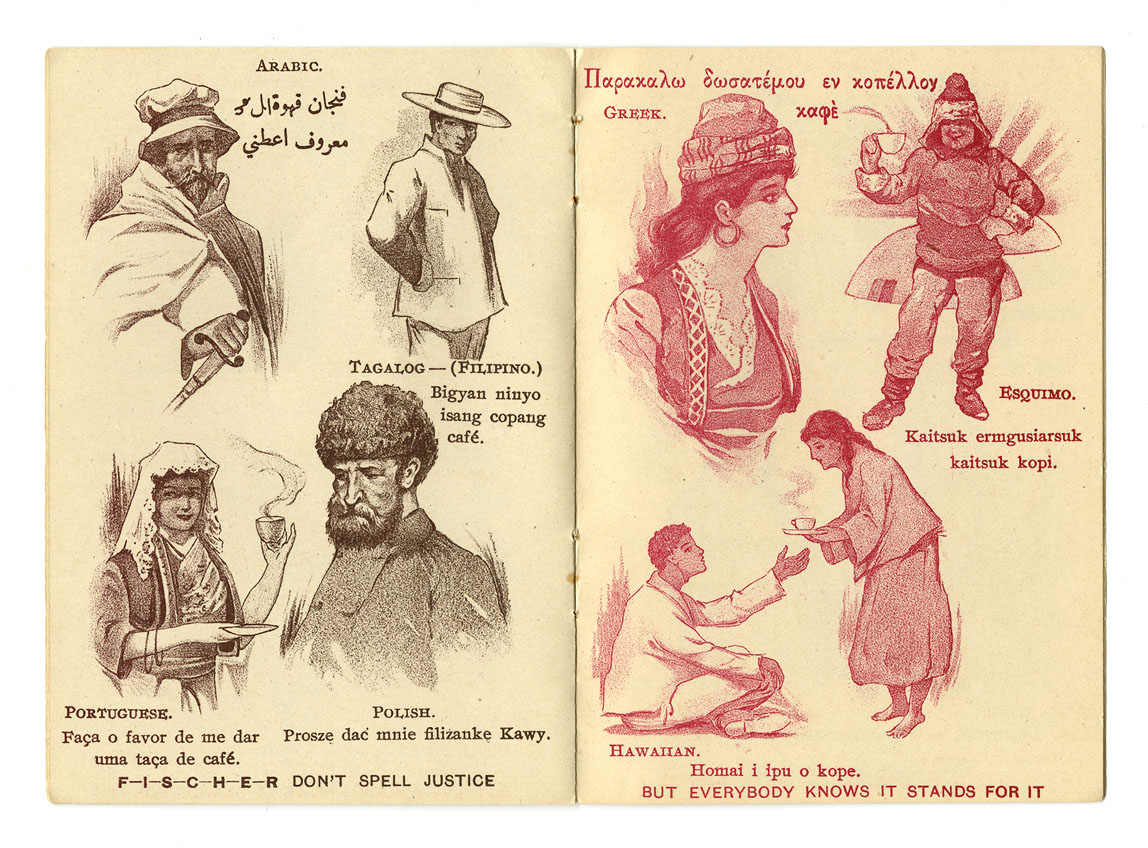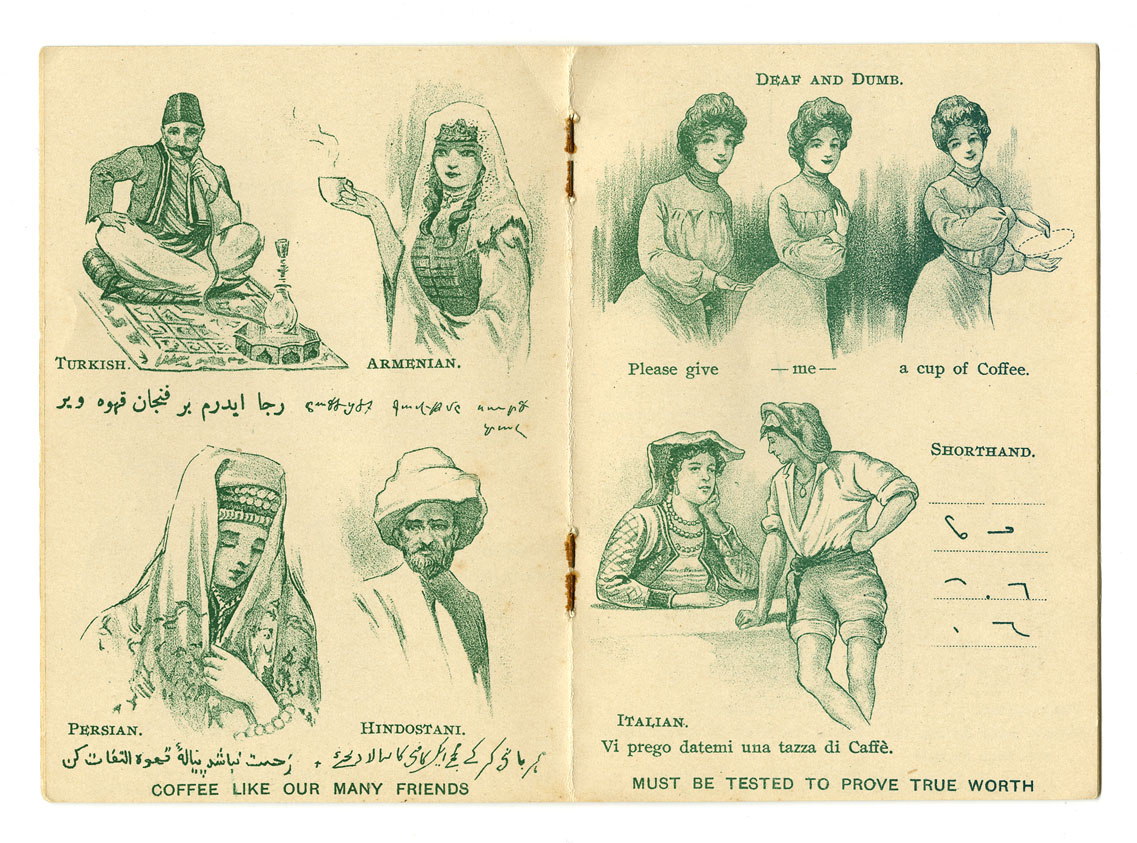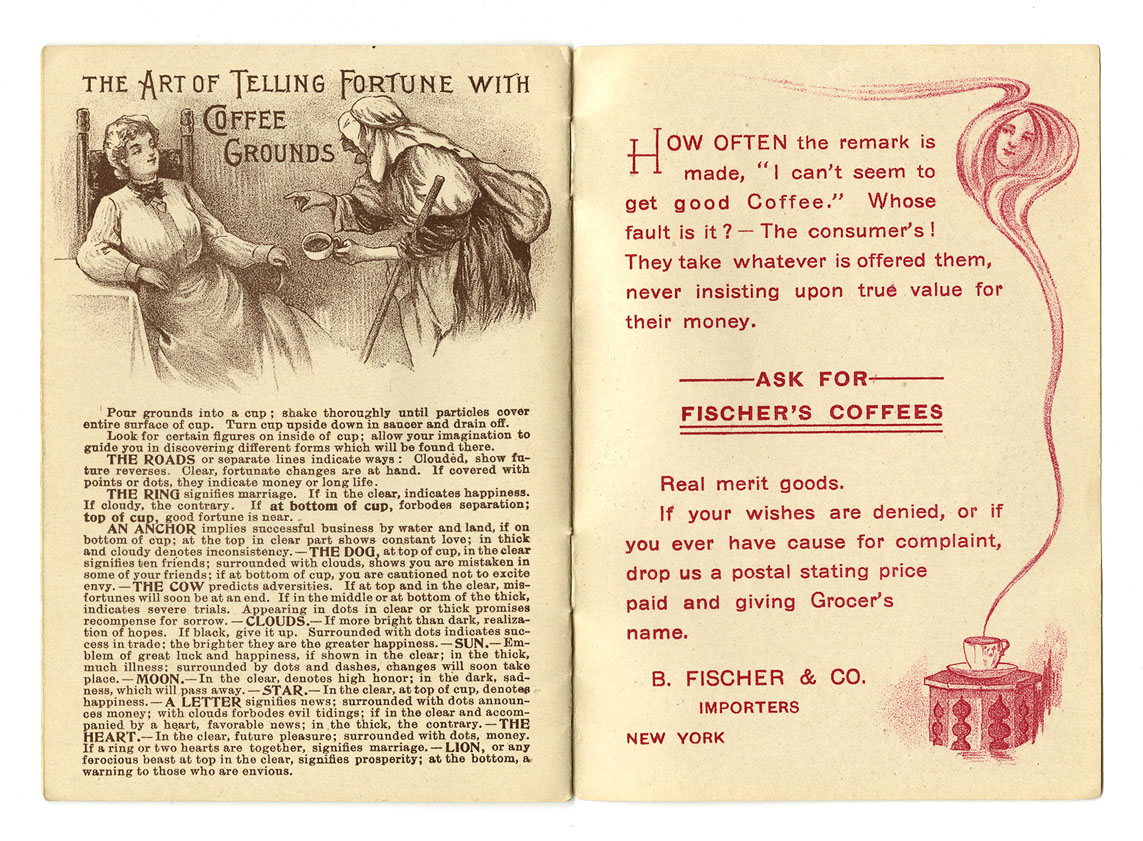Coffee is such a normal, frequent occurence both inside and outside the walls of HSP that we often don't think twice about it beyond our daily morning pilgrimage. It ensures that those who drink it stay awake, functional, and most of all, pleasant enough to conquer the day, so much so that among the Folgers and Nescafé commercials and the Dunkin' Donuts and Starbucks bus ads, marketers have tapped into our need of coffee to make it commonplace, routine, and universal.
A few days ago I came upon an amusing pamphlet from the Balch Institute Ethnic Images in Advertising Collection, titled "How to Ask for a Cup of Coffee in 32 Languages." Printed in 1905, this illustrated promotional booklet from Fischer's Coffees translates the phrase "Please give me a cup of coffee" into 32 different languages, emphasizing that "among the teeming thousands that are rushing into the United States every week... from every country of the globe, speaking no other language than their own... the word coffee is pronounced very much the same in all languages."
Using New York's diversity to speak to coffee drinkers across immigrant communities, the booklet features ethnic images and stereotypical representations that were used widely in advertising and merchandising in the early to mid twentieth century. Benedickt Fischer himself, of B. Fischer & Co., was a German immigrant who came to New York in 1855 and set up his own coffee roasting business around 1861.
While most of the drawings are fairly innocuous and refrain from becoming caricatural, archaic terms like "deaf and dumb" used in the representation for sign language still reflects its time.
Also of note is a page at the end dedicated to "The Art of Telling Fortune with Coffee Grounds," which gives directions on how to read the different forms coffee particles take and the meanings they indicate.
The pamphlet in its entirety is in HSP's digital library and will be accessible soon. Take a look at the languages you know and tell us if the translations are correct!

